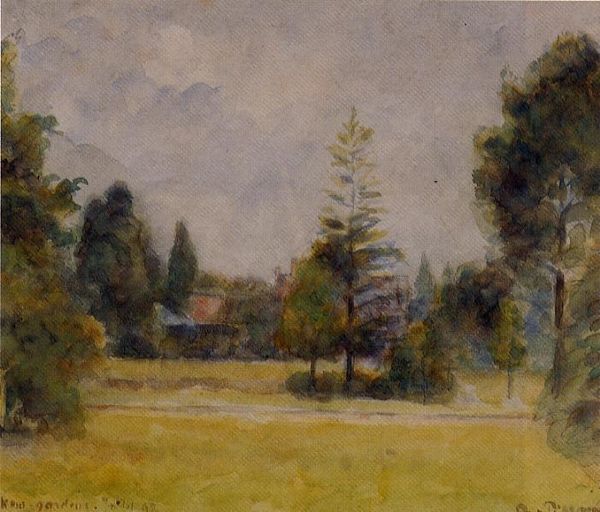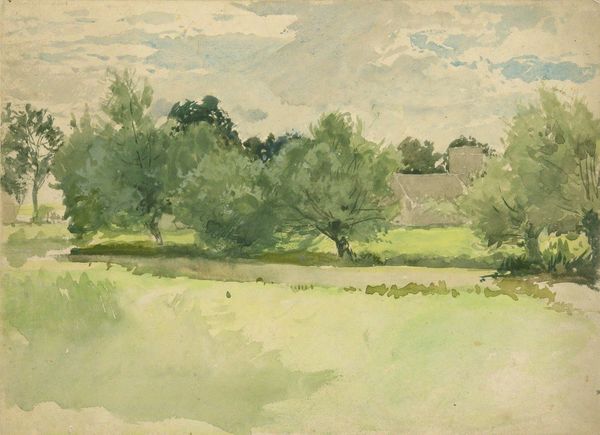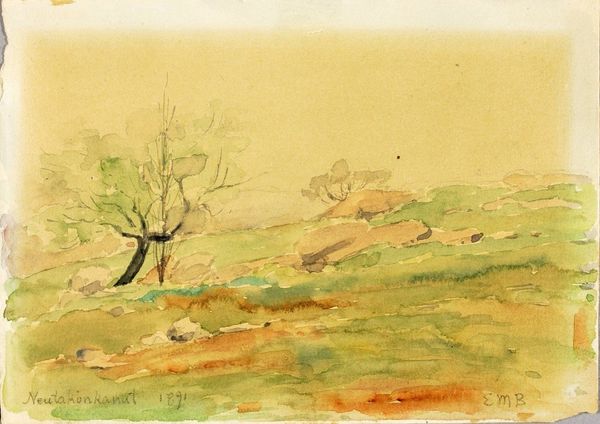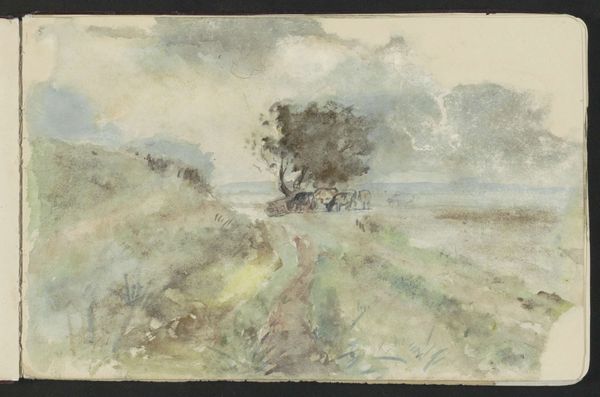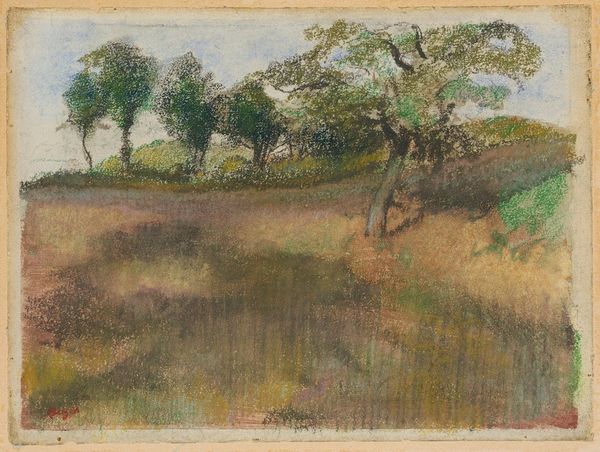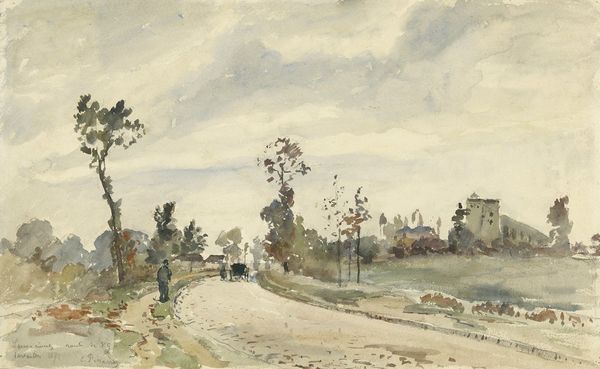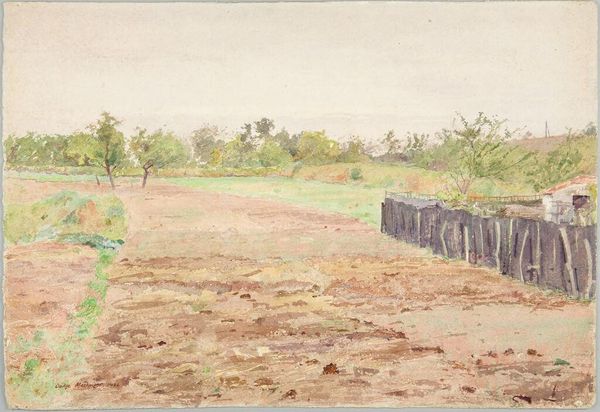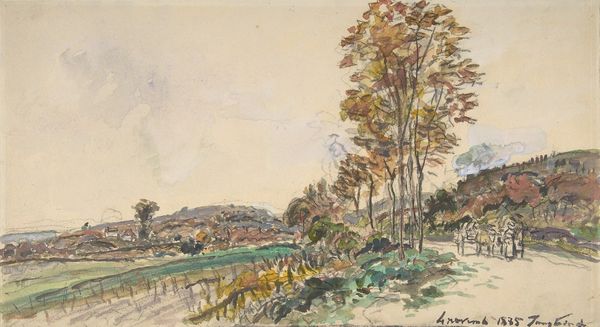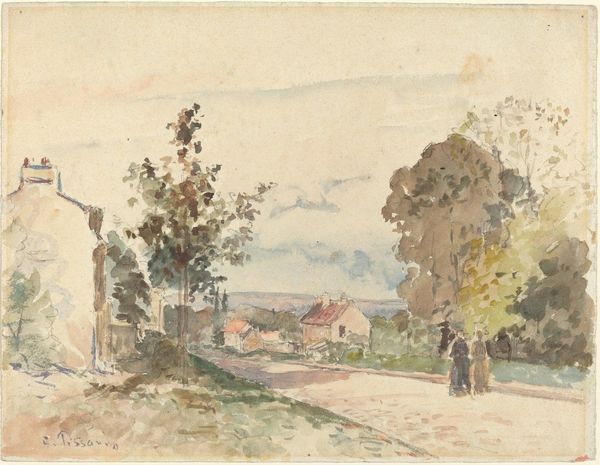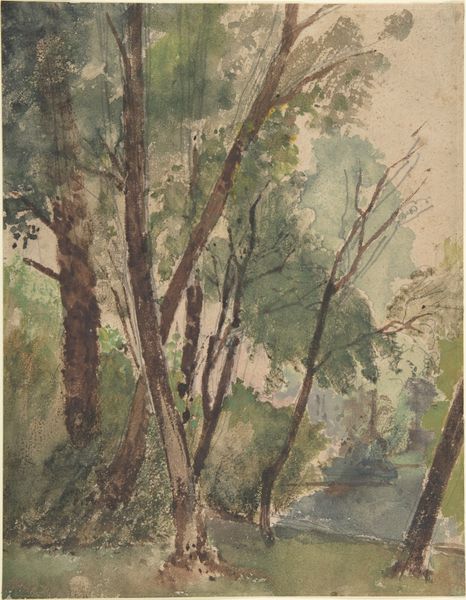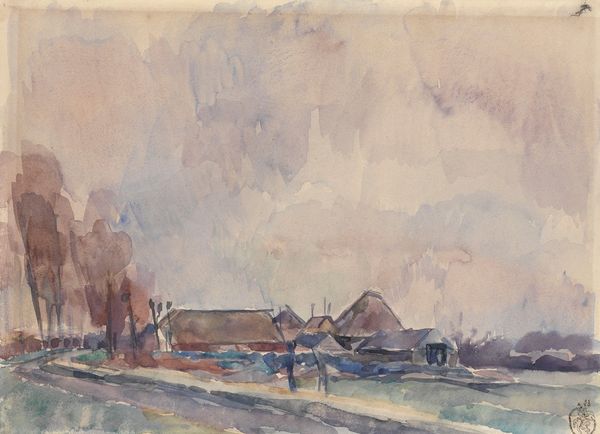
plein-air, oil-paint, watercolor
#
impressionism
#
plein-air
#
oil-paint
#
landscape
#
watercolor
#
coloured pencil
#
post-impressionism
#
watercolor
Copyright: Public domain
Curator: Here we have Camille Pissarro’s "Eragny," a watercolor from 1890. Pissarro painted it en plein air, capturing the French countryside near his home. Editor: It's interesting how muted the palette is. It gives off an almost melancholic or dreamy quality. Everything is softened, veiled, it seems almost faded like an old memory. Curator: Exactly! Look closely, and you’ll notice Pissarro's technique. The diluted pigment and light brushstrokes build the scene without firm outlines. Observe the careful construction in terms of tonal gradation, see how he's using light to sculpt form. It anticipates some later developments in landscape painting. Editor: What strikes me is how the low horizon line emphasizes a vast, open space. You feel almost dwarfed by the sheer emptiness in the composition. There’s a potent symbolic element to the vast land that relates to Romantic themes. Curator: Undoubtedly. But I wonder, does this reflect more on his personal experiences at the time? Consider his stylistic shift post-Impressionism. What structural elements did he adopt or refute? This turn towards simplifying form, and intensifying subjective light marks that significant change. Editor: The few red roofs and touches of green disrupt the monochrome which pulls the eye in. Consider also the row of trees; they create a sort of processional leading us back into history and the rural. This kind of visual cadence isn't accidental; it ties deeply to pastoral themes in art. Curator: Quite true. Though it also could be said that Pissarro here constructs the landscape less as a replica and more as a formal arrangement in tones. Take into account those rows; these are echoes that play as an important part of his composition strategy. The painting shows not the thing-in-itself, but how he wants us to consider it through tonal dynamics. Editor: I agree to some extent. It’s less about purely capturing “nature” as something directly seen, but layering meaning, memory and history onto the image as it's understood through our cultural symbols. Both his technique and symbolism evoke powerful, evocative resonance. Curator: Ultimately, it serves as an excellent piece for understanding his aesthetic program in that era. It marks him turning the familiar toward his unique formal arrangements. Editor: Right! Eragny serves as a good reminder how powerful rural landscapes can be in touching core symbols from both collective and subjective life experience.
Comments
No comments
Be the first to comment and join the conversation on the ultimate creative platform.

